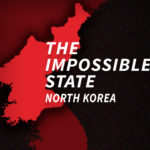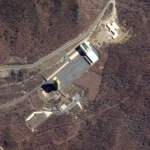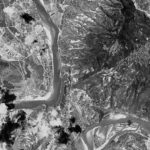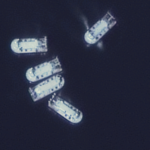June 19, 2018—
Special guests Ambassador Robert King, the former special envoy for North Korean human rights issues, and Joseph Kim, a young man who defected from North Korea in 2006, discuss human rights in North Korea and the Trump administration’s position on the issue in the aftermath of the Singapore Summit.
June 12, 2018—
Victor Cha, the former deputy head of the U.S. delegation to the Six-Party talks during the George W. Bush administration, and Mike Green, the senior director for Asia of the National Security Council of George W. Bush., talk about the outcome of the Singapore Summit. Mike joins us in the studio and Victor by phone in New York.
June 12, 2018—
North Korea is the impossible state. For over 45 years no American president has figured it out. Now, the stakes may be higher than ever as Donald Trump and the Trump administration come to the negotiating table. Each week join the people who know the most about North Korea—The Center for Strategic and International Studies’ Victor Cha, Mike Green, and Sue Mi Terry—for an insider’s discussion with host H. Andrew Schwartz about the United States’ top national security priority.
June 7, 2018—
The world’s top Korea watchers, Victor Cha, Sue Mi Terry, and Mike Green, discuss the upcoming June 12 Summit in Singapore, what Kim Jong Un has already gotten out of the meeting with Donald Trump, the maddening nature of negotiations with North Korea, and potential summit outcomes.
May 30, 2018—
Sue Mi Terry, a former senior CIA analyst and National Security Council staff member during the George W. Bush and Barack Obama administrations talks about efforts this week by the administration to revive the peace summit between President Trump and North Korean leader Kim Jong Un.
May 25, 2018—
Victor Cha, a top Korea expert who was an Asia director in the National Security Council during the George W. Bush administration and deputy head of the U.S. delegation at the Six-Party Talks in Beijing, talks about President Trump’s letter to North Korean leader Kim Jong Un canceling the June 12 summit in Singapore and where bilateral talks might go from here.
May 14, 2018—
The exact origins of North Korea’s nuclear program are still shrouded in mystery despite being the object of study for over twenty-five years. Contrary to common perception, early satellite imagery from the Central Intelligence Agency, taken on December 15, 1962 and June 27, 1963, shows that construction on the Yongbyon Nuclear Research Center in North Korea started sometime after June 27, 1963 and before July 16, 1964.
April 23, 2018—
On Saturday April 21, commercial satellite imagery from the Sohae Satellite Launching Station indicates minimal to no activity ahead of the inter-Korean summit. While dwindled ground activity could be attributed to the fact that images were taken during a weekend, the absence of any parked vehicular traffic and human activity suggests compliance with the leadership’s declaration, coming out of the Third Plenary of the Central Committee of the Workers' Party.
April 23, 2018—
Despite being the subject of intense study for almost 60 years there is remarkably little independently verifiable information concerning the development of North Korea’s nuclear infrastructure available at the unclassified level. This series of reports entitled "Yongbyon Declassified," tries to rectify that by examining high-resolution satellite imagery acquired by early U.S. reconnaissance programs.
March 5, 2018—
North Korean special forces are a critical component of the Korean People's Army. Within the Korean People's Army Naval Force, unique sniper brigades exist to carry out specialized missions focused on sabotage and subversion of command and control facilities, reconnaissance, infiltration, and amphibious landings and assaults. As part of a four-part series, this final report provides more details about the development, organization, deployment, and training of North Korean hovercraft units which form part of the KPN sniper brigades.










